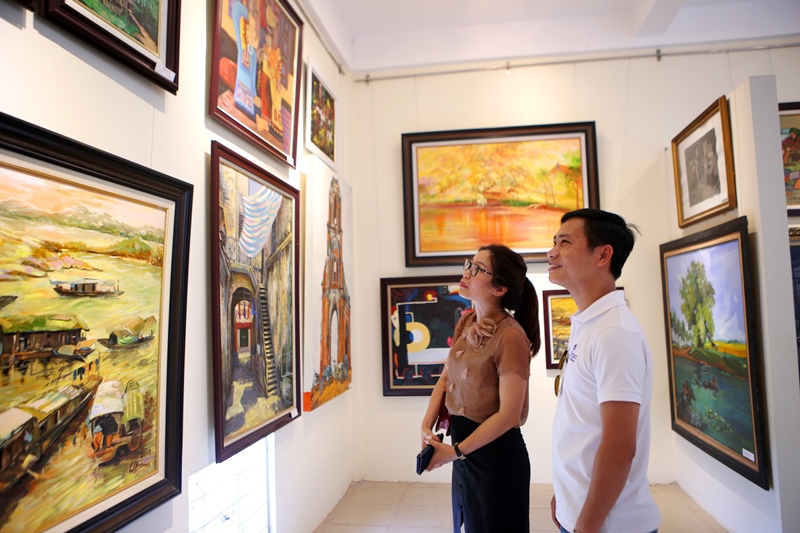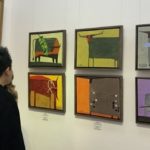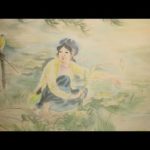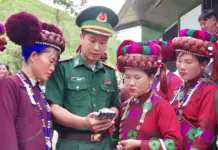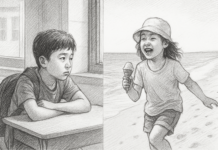Co Do Village, located about 70 km from downtown Hanoi in Ba Vi District, is a peaceful village along the Red River. It has gained a reputation as the “village of painters” due to the high number of painters residing in its 5,000 households. Many of these painters are active members of the Vietnam Fine Arts Association and work as professional artists.
The village’s tradition of painting was initiated by the late painter Nguyen Sy Tot, who was born in 1920. Since childhood, Tot had a penchant for drawing and would wander around the village sketching communal houses, temple gates, and rice fields. After joining the army and creating propaganda posters, Tot had the opportunity to study at the Vietnam College of Fine Arts under the guidance of renowned artist To Ngoc Van (1906 – 1954).
Following the war, Sy Tot returned to his hometown and used his brush to capture the essence of the village and the hardworking farmers through his artwork. His talent and passion inspired fellow villagers to take up fine arts, and he began teaching them to paint for free. As a result, more and more Co Do villagers became involved in the world of visual arts.
Sy Tot’s paintings can now be found in the Vietnam Museum of Fine Arts, as well as in museums abroad in countries such as the USA, France, Germany, Sweden, and Poland. Holding a collection of nearly 1,000 paintings, Sy Tot has made a significant impact on the Vietnamese art scene.
Today, the tradition of painting continues within Sy Tot’s descendants and students. In 2016, the Co Do Fine Arts Museum was established as a dedicated space to exhibit the paintings by the people of Co Do. The village now boasts two art museums, including the Sy Tot Museum and the Co Do Fine Arts Museum, along with numerous family galleries.
The Co Do Fine Arts Club, currently comprising 37 artists, including members of the Vietnam Fine Arts Association and the Hanoi Fine Arts Association, organizes regular drawing sessions and participates in exhibitions throughout the country. Co Do painters often depict landscapes, still life, and portraits, capturing the everyday life with a genuine and captivating authenticity.
“The art in Co Do Village still retains the essence of Vietnamese aesthetics and culture,” remarks painter Luong Xuan Doan, the chairman of the Vietnam Fine Arts Association. He believes that the village’s beautiful landscape and cultured way of life are responsible for the emergence of Co Do paintings and the unique creativity of its residents.
With the support of local authorities, Co Do Village has the potential to leverage its cultural and artistic heritage to become a distinctive tourist destination in the capital, says Doan.
In addition to fostering the art scene, the Co Do Fine Arts Club also aims to inspire children’s love for painting. Each year, during the summer, club members provide free painting lessons to children, creating a healthy and beneficial activity during the vacation period. These classes cultivate the younger generation’s passion for art and offer an avenue for creative expression.
The Co Do Fine Arts Club was established in 2006, and since then, free drawing classes have been held at the Co Do Fine Arts Museum. Over 350 children, many of whom come from disadvantaged backgrounds, have already benefited from these lessons. The club hopes to attract sponsors to support their efforts in organizing more free drawing classes for children. The class not only allows children to explore their creativity and imagination but also provides a stimulating summer playground in Co Do Village.
By nurturing and cultivating young painters, the continuation of the village’s painting tradition serves as a testament to its commitment to the homeland and the country. Painter Hoang Tuan Viet, chairman of the Co Do Fine Arts Club, expresses the club’s reliance on external funding to purchase art supplies. Sponsorship for their cause would enable them to continue providing free drawing classes for children, concludes Viet.

